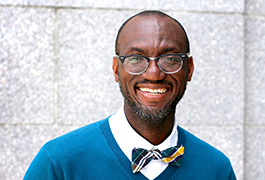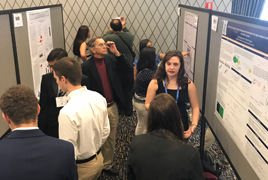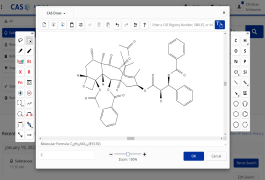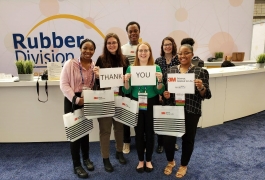Priestley Medalist Mostafa El-Sayed's Nano Scale Fight Against Cancer
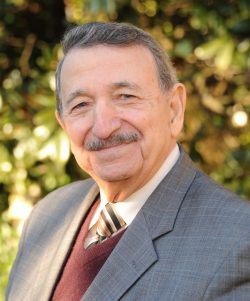
Mostafa El-Sayed, Ph.D., an internationally recognized chemist and 2016 winner of ACS’ highest honor, the Priestley Medal, will present the Eminent Scientist Lecture as part of the Undergraduate Program at the 254th ACS National Meeting & Exhibition (August 20–24, 2017 in Washington, DC). El-Sayed will share insights about his research groups’ promising new approach for cancer treatment.
With a career that began over 60 years ago in Egypt, El-Sayed’s research efforts today are in two unique areas: photothermal-based cancer therapy using targeted plasmonic nanoparticles and monitoring cellular processes using a combination of enhanced spectroscopic techniques, traditional biochemistry, and dark-field microscopy/spectroscopy.
For the Eminent Scientist Lecture, El-Sayed will describe how properties change as materials are reduced to the nanoscale, and how those changes make gold nanorods an exciting new approach to killing cancer cells. Ahead of the event, El-Sayed talked with inChemistry about his decorated career trajectory and also shared insights about the promising new discoveries for cancer treatment by his research group at Laser Dynamics Laboratory.
Eminent Scientist Lecture & Luncheon
Undergraduate students can find tickets in their badges
“The Many Great Advantages of Gold Photo-Thermal Therapy of Cancer”
Mostafa El-Sayed, Ph.D., Georgia Institute of Technology
Noon–1:30, Monday, August 21, 2017
El-Sayed will share how properties change as materials are reduced to the nano scale, and how those changes make gold nano-rods an exciting new approach to killing cancer cells.
A new approach to an old problem
Traditional methods of treating cancer include a range of approaches, including radiation, chemotherapy, and surgery. But according to El-Sayed, all of the standard approaches share a critical weakness: Cancer cells tend to respond by migrating to other parts of the body, using protein strings that propel the cells through the bloodstream. His research groups are trying to find a way to first immobilize the cancer cells’ ability to migrate and then to kill them.
El-Sayed is overseeing three research groups—one in the United States and two in Egypt. The researchers in Cairo are currently conducting in vivo testing among a small set of dog and cat subjects. Preliminary results indicate the treatment is succeeding not only at killing the cancer cells but also at preventing their migration to other parts of the body. Currently El-Sayed’s work is focusing on treating breast cancer cells, but the concept has the potential to address other types of cancer as well.
A long and rewarding career
El-Sayed’s early career took him from his small village in the Nile Delta to Cairo’s Ain Shams University, where he earned a B.Sc. degree. He was just getting started on a career in teaching when he learned of an opportunity for Egyptian students with backgrounds similar to his to apply to a Florida State University (FSU) graduate studies program. His acceptance to FSU was the start of a satisfying career in research that took him to Harvard, the California Institute of Technology, the University of California, Los Angeles (UCLA), and, finally, the Georgia Institute of Technology.
At UCLA in the 1960s, El-Sayed led a research group using molecular spectroscopy to investigate mechanisms and processes within molecules, gas-phase clusters, and other environments. His group gained international recognition when it experimentally verified a set of rules governing electronic relaxation in organic molecules—a line of inquiry that produced what have come to be known as the El-Sayed rules.
Almost 30 years later, in the early 1990s, El-Sayed began pursuing research in nanotechnology and was eventually invited by Georgia Tech to head its research in the emerging field. El-Sayed assembled a research group that began looking at semiconductor nanoparticles. The group later moved its focus to metallic (mostly platinum, palladium, gold, and silver) nanoparticles.
Later in that decade, however, El-Sayed’s wife, Janice, was diagnosed with breast cancer. “My wife suffered with cancer for five years, he recalls, and she endured radiation treatment followed by chemotherapy that seemed to work for a while but eventually just didn’t work anymore.” As he helped her through the ordeal, El-Sayed began reading up on the current research on cancer and its treatment.
Finding a path to a solution
Unfortunately, Janice died in 2004. But El-Sayed continued his work in nanotechnology, now with a special interest in its potential as a targeted delivery system of photothermal treatment of breast cancer. His research group at Georgia Tech explored the possibility of creating a solution with extremely small, gold nanorods that could be injected near the cancerous tissue, exposed to near-IR light to raise its temperature just high enough to destroy the cancer cells.
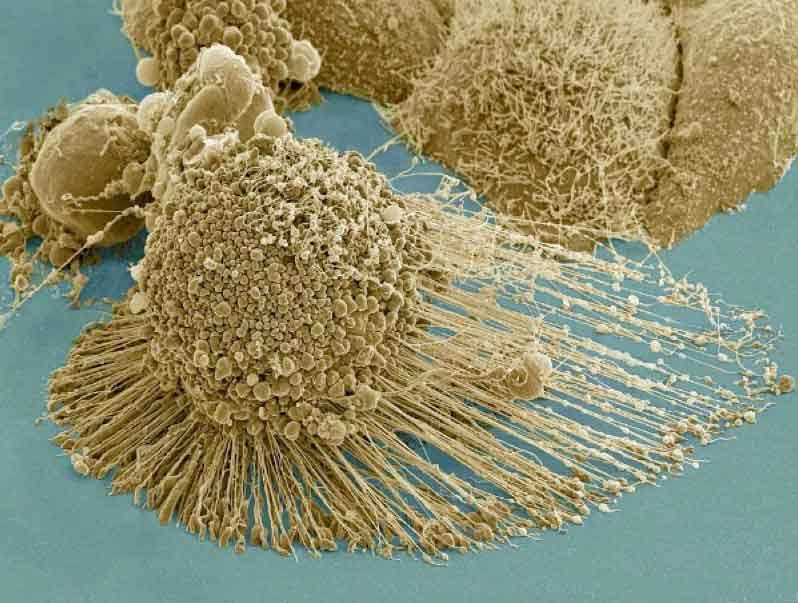
One of the researchers’ major scientific breakthroughs came in 2014, when they found that gold nanorods of a specific size—approximately 45 x 20 nm—converted light into heat. “What we’ve found,” says El-Sayed, “is that by raising the temperature to about 45 °C, the cancer cells completely melt, and the incidence of cells surviving to migrate elsewhere is eliminated.”
A second break occurred after El-Sayed had given a talk in Egypt about his group’s research. Following the presentation, he was asked by the Egyptian National Research Centre and Cairo University to direct their research teams. The groups soon began offering the experimental photothermal therapy for pets that had been diagnosed with cancer.
The group now has three years of data from approximately 40 cats and dogs under treatment, and the results are very promising. Not only did the treatment kill the cancerous cells in the animals, but there have been far fewer incidences of cancers spreading in the animals compared with those that would be seen using standard treatment approaches. “In fact,” El-Sayed says, “now, every morning people are standing in line at our lab with their cats or dogs that need to be treated.”
El-Sayed notes that the technique is still in its initial testing, and in the United States, it will take more time to do additional testing. “But if we continue seeing the successes,” he says, “we hope to begin testing our technique with human subjects sometime in the near future.”
El-Sayed’s impressive CV
El-Sayed has several roles today including his above-mentioned leadership of three research groups and his positions at Georgia Tech. During the course of his career, he also served for 24 years as editor-in-chief of ACS’s The Journal of Physical Chemistry, where he oversaw the journal’s climb in popularity to the point that it eventually evolved into two journals.
El-Sayed has received a long and impressive list of awards and recognitions, including the 2007 National Medal of Science in Chemistry from U.S. President George W. Bush in 2008 and the Medal of the Egyptian Republic of the First Class from the President of Egypt in 2009. He was nominated by President Barack H. Obama to the U.S. National Medal of Science Selection Committee in 2014, served a two-year term, and has was reappointed for a second term.
He was also the 2016 recipient of ACS’s highest honor, the Priestley Medal. In accepting the medal, El-Sayed modestly observed, “I believe that everyone gets a few good breaks in his or her life. The lucky ones are those who recognize them and change their lives accordingly.”
Taking the macro view
Because of his late wife’s experience with cancer, El-Sayed has a genuine passion for his work. “I hope that one day people will make use of the technique my teams have been working on, and deaths from cancer will be reduced.”
El-Sayed is a humble man and acknowledges the series of lucky breaks that have helped him along on his long career. He also acknowledges that he has benefited from a lifelong curiosity about new technologies and scientific concepts. “My advice to young people entering the chemistry field is to continue to learn about emerging research by reading publications and attending meetings,” he says.
Last updated 2/5/2020

